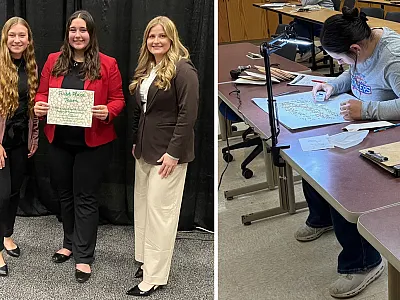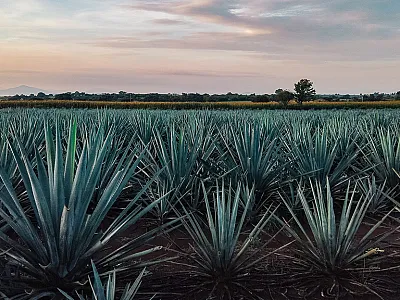4R Research With Impact
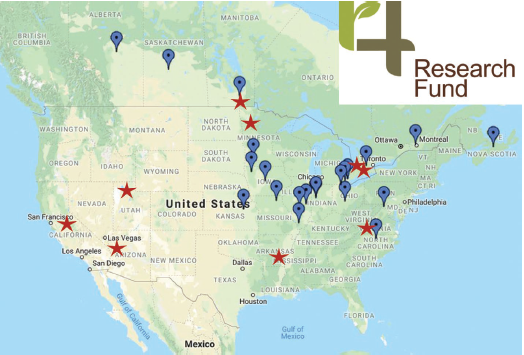
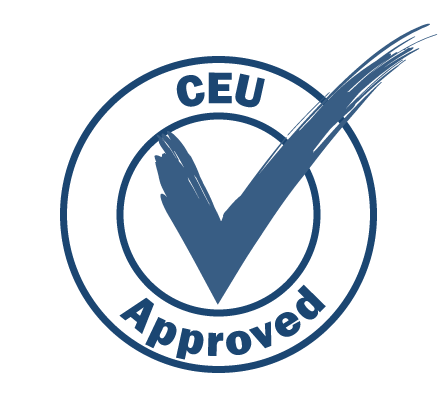
In 2013, the fertilizer industry in North America launched the 4R Research Fund. Members of the fertilizer industry pledged annual commitments of financial support to research connecting 4R practices to impacts. This article briefly summarizes findings and benefits to the industry that have resulted from the financial support directed towards research. Earn 0.5 CEUs in Nutrient Management by reading this article and taking the quiz at https://web.sciencesocieties.org/Learning‐Center/Courses.
In 2013, the fertilizer industry in North America launched the 4R Research Fund. Members of the fertilizer industry pledged annual commitments of financial support to research connecting 4R practices to impacts. This article briefly summarizes findings and benefits to the industry that have resulted from the financial support directed towards research.
Over the period 2013 to 2022, industry provided around $8 million to support 39 projects across at least 22 states and provinces in the United States and Canada. Some of these projects have been completed, and others are ongoing. These funds were leveraged with an additional several million dollars from public and private partners.
Calculating the return on investment for research is never easy. Some of the returns may be translated into a dollar value, but many more simply contribute to demonstrating responsibility in plant nutrition. A quick review of the easily quantified benefits, however, shows returns of many hundreds of millions of dollars to the profitability of fertilizer use by crop producers. These benefits are continuing, and others may yet reveal themselves going forward.
Lake Erie Watershed
Around 2010 to 2014, an increasing trend in harmful algal blooms was coming into public awareness, and river monitoring showed increasing loads and concentration of dissolved phosphorus. The western Lake Erie watershed includes at least 5 million acres of productive cropland in Ohio, Indiana, and Michigan. Recognizing the potential importance of this issue, fertilizer dealers began discussions with scientists and took two actions: supporting 4R research with edge‐of‐field monitoring and establishing a dealer 4R certification program.
Studies from the 4R Research Fund confirmed that subsurface placement could be effective in reducing losses of dissolved phosphate (King et al., 2018). Evaluating 4R nutrient management practices across 38 sites with a range of characteristics provided evidence that adhering to 4R principles resulted in decreased P loss from subsurface tile‐drained fields. Findings indicate that applying organic fertilizers at P‐based rates, considering the solubility of the fertilizer source, using soil tests and following recommended application rates, avoiding fertilizer application during wet periods of the year (e.g., winter and early spring) and prior to large precipitation events, and placing fertilizer below the soil surface are all practices that will decrease P loss. The effectiveness of these practices will vary by field due to differences in site characteristics, but these nutrient management practices are directionally correct and represent practices that producers should use to better manage P and decrease environmental losses.

Recent reports of the International Joint Commission (IJC) overseeing the Great Lakes recognize 4R practices as effective in reducing phosphorus losses but note that 4R practices range in terms of economic benefit or cost to the farmer, and thus some of the more effective practices—which could include subsurface placement—still have potential for increased adoption.
Costs of implementing a dealer certification program in Ohio were estimated at a total of $350,000 through 2017. These costs were found to be small compared with the potential benefit of reduced harmful algal blooms in Lake Erie. Households in Ohio were found to be willing to pay a total of more than $14 million for a 1% reduction in algal blooms (Roe & Bender, 2016). This assessment of Ohio household willingness to pay for reductions in harmful algal blooms concluded that 4R certification program benefits are highly valued compared with agri‐retailer costs. Benefits will exceed costs even if only a small percentage of nutrient management practices improved as a result of the program.
Policy to address the issue of increasing harmful algal blooms chose to focus on placement rather than rate of phosphorus application. A focus on reducing rates could have reduced crop yields over millions of acres since the watershed’s phosphorus balance has been in deficit since the early 1990s (TFI, 2022). Instead, the 4R certification program emphasizes application at the right time and with the right placement, enabling continued sales of phosphate fertilizers to replenish nutrient removed by crops.
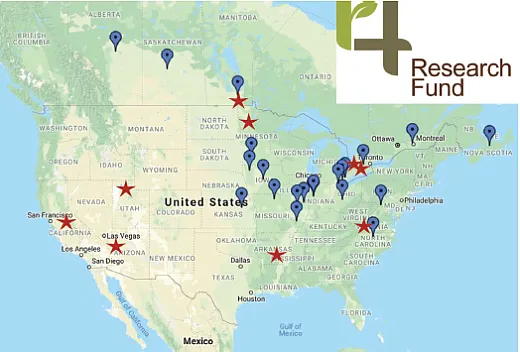
Midwestern Drainage Group–Nutri‐Net
Launched in 2017, the 4R Nutri‐Net project was supported jointly by the 4R Research Fund and the Foundation for Food and Agricultural Research, with a commitment of $1 million from each. It brought together 16 researchers managing eight sites in Illinois, Indiana, Iowa, Minnesota, Missouri, and Ontario. Each of these sites was instrumented to monitor tile drainage from individual experimental units in which 4R practice treatments were applied to corn crops. In addition, all sites monitored yields and nutrient use efficiency, and some included measures of ammonia and nitrous oxide emissions as well. The ability to simultaneously monitor multiple outcomes is a unique feature of this project.
Three years of study have shown that 4R and other advanced practices can provide environmental benefits with no production decline even though year‐to‐year weather differences impact absolute yield. Data from this project can be used to evaluate the models and tools currently under consideration for use in estimating climate change mitigation following implementation of “climate smart” practices. Data have been made available in an open access database (Abendroth et al., 2022).
Drawing on results from the Minnesota site, in 2021, Dr. Fabian Fernandez evaluated research impact by surveying participants of the annual “Nitrogen: Minnesota’s Grand Challenge and Compelling Opportunity Conference.” Participants at this conference influence N management practices for corn on 5.4 million acres. The results showed that split‐applying enhanced‐efficiency nitrogen forms improves yields while reducing losses. Compared with the traditional practice of preplant urea, seven years of yield data showed a 10% yield improvement translating to increased economic return of $63 per acre. Given that 38% of those surveyed have made or plan to make this practice change, an annual increase in economic returns of $129 million was estimated. An additional benefit is reduced emissions of nitrous oxide (amounting to ~250,000 tons of CO2‐equivalents) with no change in rates of nitrogen application.
Canada
Around 2001, even before the concept of 4R was being discussed, the fertilizer industry in Canada was supporting research on nitrous oxide emissions arising from fertilizer application. A project titled “The Effect of Nitrogen Fertilizer Placement, Timing, and Formulation on Greenhouse Gas Emissions and Agronomic Performance” (Lemke et al., 2006) was supported with annual financial contributions of Can$45,000 from the Canadian Fertilizer Institute. This three‐year project compared nitrous oxide emissions from four locations with contrasting soil and climatic conditions in Saskatchewan. Spring wheat was fertilized with urea and anhydrous ammonia that was either banded in the fall or placed in mid‐row and side‐row positions at seeding time in the spring. Nitrogen sources, timing, and placement showed little effect on emissions, but emissions increased linearly with fertilizer‐N rate. The percentage of fertilizer‐N lost as N2O (emission factor) most often fell at or below 0.4% with an overall mean of 0.2%. By 2008, this and other research findings were adapted into the Tier 2 methods used for calculating the national inventory of greenhouse gas emissions (Rochette et al., 2008). The Tier 2 method, compared with the Tier 1 emission of 1.25%, substantially reduced the total amount of N2O emission attributed to agriculture in western Canada. The reduced emission factor is attributed to the semi‐arid climate of the Canadian Prairies.
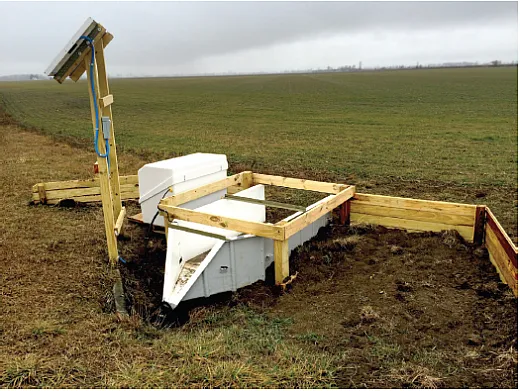
Continued research on 4R practice impacts—supported both by industry and by public sources—has accumulated evidence allowing a recent assessment to conclude that increased adoption of 4R practices could reduce greenhouse gas emissions in Canada by 6.3 million tons of carbon dioxide equivalents annually by 2030, contributing 3% of Canada’s commitment to the Paris Accord (Drever et al., 2021). At Canada’s current “carbon price” of $50 per ton, this equates to more than $300 million of potential annual value to society. While efforts have not yet succeeded in translating this value into payments to the farmers adopting the practices, government programs to provide cost‐share for 4R practices have been announced. The $200‐million On‐Farm Climate Action Fund is an initiative to help farmers tackle climate change. Scheduled to run from 2021 to 2024, it will support farmers in adopting practices that store carbon and reduce greenhouse gases in three areas: nitrogen management, cover cropping, and rotational grazing practices. Additional funding beyond 2024 has also been announced.
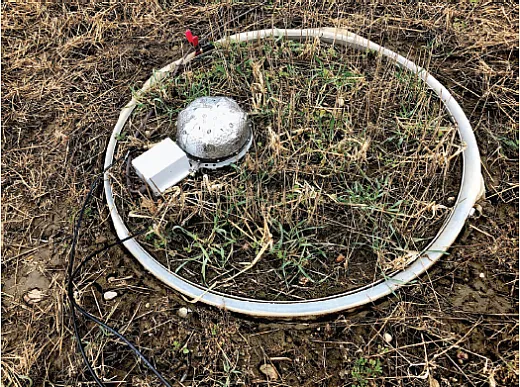
The most generalizable 4R practice for reducing nitrous oxide emission from fertilizer is the use of inhibitors, particularly the combination of inhibitors of urease and nitrification in granular urea. In 44 site‐years of measurements on the Canadian Prairies, the use of such double inhibitors reduced emissions by 40% (M. Tenuta, personal communication), even without counting the rate adjustments possible from reduced total losses and higher N use efficiency with these products. This reduction figure roughly agrees with a recent global “meta‐analysis of meta‐analyses” (Grados et al., 2022), which found an average reduction of 49% for the same comparison. The use of a nitrification inhibitor on its own produces a similar reduction, but caution is encouraged when applied to urea because of the risk of increasing ammonia volatilization in some situations (Fan et al., 2022). For slow‐ and controlled‐release fertilizers, the reduction found was 33%, and for urease inhibitors, 23% (Grados et al., 2022). Thus, clearly it is possible through choices of “right source” to substantially mitigate nitrous oxide emissions, providing large value in the effort to move society to “net zero” in terms of emissions that affect the climate.
Additional Benefits
Any research project on 4R practices involves training of students, technicians, and research scientists on principles of soil fertility and plant nutrition. This training and team building leads to capacity development for future support for nutrient stewardship in both research and extension. This capacity building is important to the fertilizer industry, ensuring a supply of highly qualified personnel for staffing important positions in agronomic leadership and public communication.
Conclusions
While it is impossible to thoroughly and precisely document the financial return to industry on each of its investments in support for research on nutrient stewardship, the returns are very large and very real. This is particularly true when such investments are guided by a 4R framework that provides a strategy for advancing the responsible management of plant nutrition.
Acknowledgments
Thanks to TFI Director of Agronomy Leanna Nigon for review.
References
Abendroth, L.J., Chighladze, G., Frankenberger, J.R., Bowling, L.C., Helmers, M.J., Herzmann, D.E., … Youssef, M. (2022). Paired field and water measurements from drainage management practices in row‐crop agriculture. Scientific Data, 9, 257. https://doi.org/10.1038/s41597‐022‐01358‐7
Drever, C.R., Cook‐Patton, S.C., Akhter, F., Badiou, P.H., Chmura, G.L., Davidson, S.J., … Kurz, W.A. (2021). Natural climate solutions for Canada. Science Advances, 7(23). https://doi.org/10.1126/sciadv.abd6034
Fan, D., He, W., Smith, W.N., Drury, C.F., Jiang, R., Grant, B.B., … Zou, G. (2022). Global evaluation of inhibitor impacts on ammonia and nitrous oxide emissions from agricultural soils: A meta‐analysis. Global Change Biology, 28, 5121–5141. https://doi.org/10.1111/gcb.16294
Grados, D., Butterbach‐Bahl, K., Chen, J., van Groenigen, K.J., Olesen, J.E., van Groenigen, J.W., & Abalos, D. (2022). Synthesizing the evidence of nitrous oxide mitigation practices in agroecosystems. Environmental Research Letters, 17, 114024. https://doi.org/10.1088/1748‐9326/AC9B50
Roe, B.E., & Bender, K. (2016). A cost‐benefit analysis of the 4R Nutrient Stewardship Certification Program. Department of Agricultural, Environmental and Development Economics, Ohio State University. https://bit.ly/3h8EuLc
King, K.W., Williams, M.R., LaBarge, G.A., Smith, D.R., Reutter, J.M., Duncan, E.W., & Pease, L.A. (2018). Addressing agricultural phosphorus loss in artificially drained landscapes with 4R nutrient management practices. Journal of Soil and Water Conservation, 73(1), 35–47. https://doi.org/10.2489/jswc.73.1.35
Lemke, R., Malhi, S.S., Lafond, G., Brandt, S.A., & Farrell, R.E. 2006. Fertilizer‐N management and nitrous oxide emissions from four sites in Saskatchewan. https://harvest.usask.ca/handle/10388/9459
Rochette, P., Worth, D.E., Lemke, R.L., McConkey, B.G., Pennock, D.J., Wagner‐Riddle, C., & Desjardins, R.L. (2008). Estimation of N2O emissions from agricultural soils in Canada. I. Development of a country‐specific methodology. Canadian Journal of Soil Science, 88, 641–654.
TFI. (2022). NuGIS Nutrient Use Geographic Information System. The Fertilizer Institute. https://nugis.tfi.org
Self-Study CEU Quiz
Earn 0.5 CEUs in Nutrient Management by taking the quiz for the article at https://web.sciencesocieties.org/Learning‐Center/Courses . For your convenience, the quiz is printed below. The CEU can be purchased individually or you can access it as part of your Online Classroom Subscription.
- When the fertilizer industry’s contributions to research are leveraged, the additional funds can come from:
- public sources.
- collaborating industries.
- environmental non‐government organizations.
- All of the above.
- Edge‐of‐field research in the Lake Erie watershed found that losses of dissolved phosphorus could be reduced by the practice of:
- subsurface placement of phosphorus fertilizer.
- substituting manure for fertilizer.
- broadcast placement of phosphorus fertilizer.
- broadcast application during winter and early spring.
- Costs of dealer certification of 4R Nutrient Stewardship are small compared with:
- dealer operating profits.
- households’ willingness to pay for reduced algal blooms.
- the value of reduced losses of fertilizer phosphorus.
- households’ willingness to pay for reduced crop yields.
- The 4R Nutri‐Net project measuring losses of nutrients in drainage water across eight sites concluded that 4R practices could:
- increase greenhouse gas emissions.
- reduce crop yields.
- provide environmental benefits with no production decline.
- provide environmental benefits at the expense of crop yield.
- Industry investments in research on nitrous oxide emissions in the Canadian Prairies showed that the semi‐arid climate led to:
- increased efficacy of nitrification inhibitors.
- lower emission factors.
- higher crop yields.
- higher ammonia emissions.
Text © . The authors. CC BY-NC-ND 4.0. Except where otherwise noted, images are subject to copyright. Any reuse without express permission from the copyright owner is prohibited.




